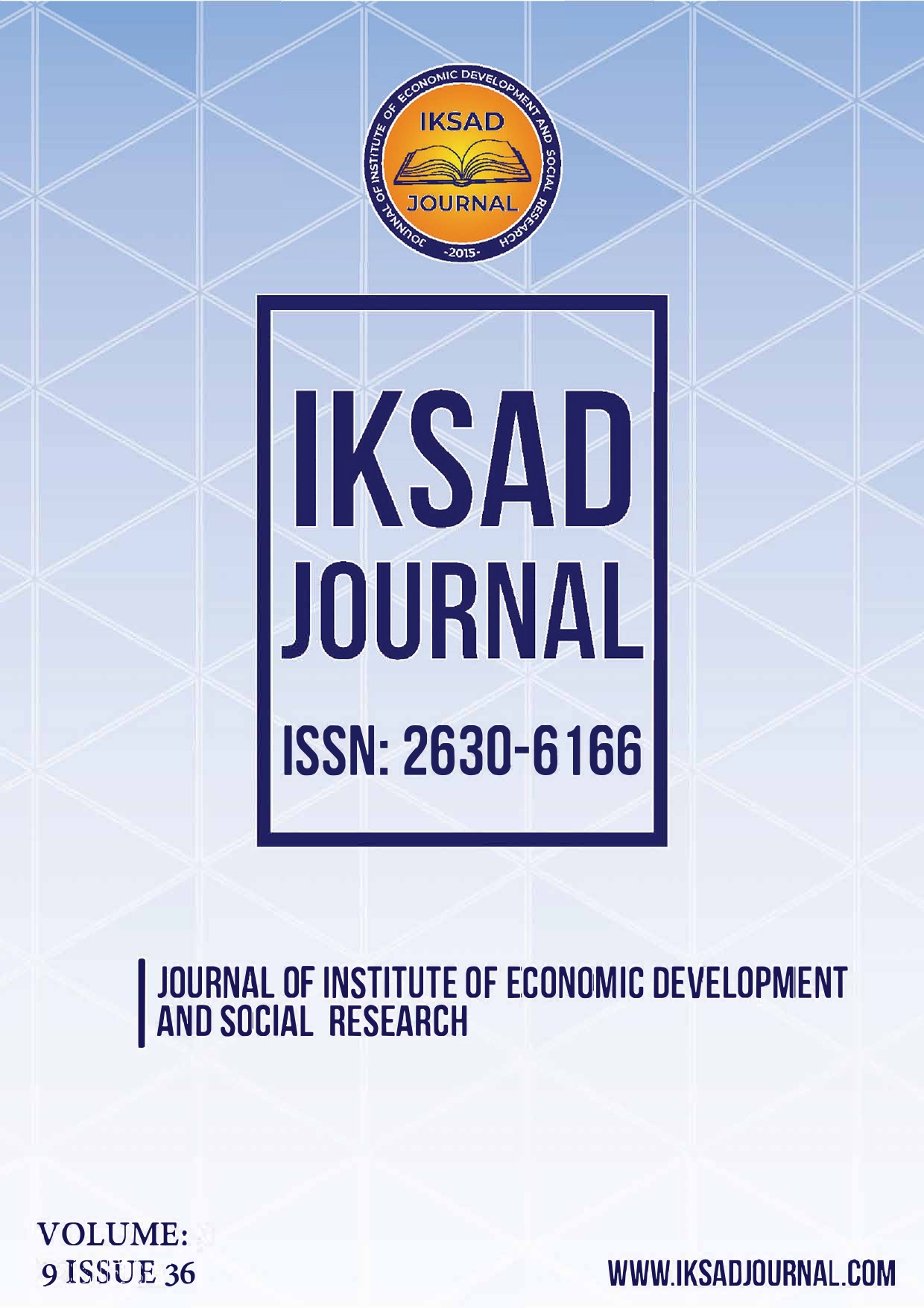The Mediating Role of Alexithymia in the Relationship Between Childhood Traumas and Dissociation
DOI:
https://doi.org/10.5281/zenodo.15363782Keywords:
Childhood Trauma, Dissociation, Alexithymia, Psychological DisorderAbstract
This study was conducted to investigate the effects of childhood trauma on dissociation and the mediating role of alexithymia in this relationship. Data from 508 participants aged 25-55 living in Istanbul were collected and analyzed using the Childhood Trauma Questionnaire (CTQ), Dissociative Experiences Scale (DES) and Toronto Alexithymia Scale (TAÖ). Data were analyzed using SPSS 26.00 and Hayes' PROCESS macro. The research findings showed that childhood trauma significantly increased the perception of trauma (β = 0.25, p < 0.01). However, the direct effect of childhood trauma on dissociation was not found to be significant (β = -0.05, p = 0.09). In contrast, the effect of alexithymia on dissociation was strong and significant (β = 0.36, p < 0.01), while indirect effects revealed that alexithymia played a critical mediating role in this relationship (β = 0.09, 95% CI [0.06, 0.13]). When sociodemographic variables were examined, marital status, family structure, and psychiatric disorder diagnosis were found to have significant effects on dissociation. These findings indicate that the effect of childhood trauma on dissociation cannot be explained by a direct relationship, but that alexithymia plays an important mediating role in this process. The study makes an important contribution to understanding the long-term psychological effects of childhood trauma; it indicates that psychotherapeutic interventions, especially those that develop emotional awareness and regulation skills, may be effective in reducing dissociation symptoms.
References
Anda, R. F., Felitti, V. J., Bremner, J. D., Walker, J. D., Whitfield, C., Perry, B. D., Dube, S. R., & Giles, W. H. (2006). The enduring effects of abuse and related adverse experiences in childhood: A convergence of evidence from neurobiology and epidemiology. European Archives of Psychiatry and Clinical Neuroscience, 256(3), 174–186.
Anda, R. F., Felitti, V. J., Bremner, J. D., Walker, J. D., Whitfield, C., Perry, B. D., Dube, S. R. ve Giles, W. H. (2006). The enduring effects of use and related adverse experiences in childhood: A convergence of evidence from neurobiology and epidemiology. European Archives of Psychiatry and Clinical Neuroscience. 256(3), 174-186.
Aust, S., Härtwig, E. A., Heuser, I. ve Bajbouj, M. (2013). The Role of Early Emotional Neglect in Alexithymia. Psychological Trauma: Theory, Research, Practice and Policy. 5(3), 225-232.
Bernstein, D. P., Fink, L., Handelsman, L., Foote, J., Lovejoy, M., Wenzel, K., Sapareto, E., & Ruggiero, J. (1994). Initial reliability and validity of a new retrospective measure of child abuse and neglect. American Journal of Psychiatry, 151, 1132–1136.
Büyüköztürk, Ş., Kılıç Çakmak, E., Erkan Akgün, Ö., Karadeniz, Ş. ve Demirel, F. (2018). Bilimsel Araştırma Yöntemleri. Ankara: Pegem Akademi Yayıncılık.
Dalenberg, C. J. ve Carlson, E. B. (2012). Dissociation in posttraumatic stress disorder, part II: How theoretical models fit the empirical evidence and recommendations for modifying the diagnostic criteria for PTSD. Psychological Trauma: Theory, Research, Practice, and Policy. 4(6), 551–559.
Ergin, M. (2021). Kadınların özel ‘‘ev içi’’ alanda göstermiş oldukları duygusal emeğin feminist perspektiften incelenmesi: Türkiye’den örnek bir çalışma (Yüksek Lisans Tezi, Dokuz Eylül Üniversitesi, Sosyal Bilimler Enstitüsü, Kadın Çalışmaları Anabilim Dalı). Dokuz Eylül Üniversitesi.
Felitti, V. J., Anda, R. F., Nordenberg, D., Williamson, D. F., Spitz, A. M., Edwards, V., Koss, M. P., & Marks, J. S. (1998). Relationship of childhood abuse and household dysfunction to many of the leading causes of death in adults. American Journal of Preventive Medicine, 14(4), 245–258.
Güleç, M. Y., Altıntaş, M., İnanç, L., Bezgin, Ç. H., Koca, E. K., & Güleç, H. (2013). Effects of childhood trauma on somatization in major depressive disorder: The role of alexithymia. Journal of Affective Disorders, 146(1), 137–141.
Güleç, M. Y., Altintaş, M., İnanç, L., Bezgin, Ç. H., Koca, E. K. ve Güleç, H. (2013). Effects of Childhood Trauma on Somatization in Major Depressive Disorder: The Role of Alexithymia. Journal of Affective Disorders. 146(1), 137-141.
Haşıloğlu, S. B., Baran, T., & Aydın, O. (2015). A study on the potential problems in marketing research: Convenience sampling and scale items with adverbs of frequency. Pamukkale Üniversitesi İktisadi ve İdari Bilimler Fakültesi, Denizli.
Holmes, E. A., Brown, R. J., Mansell, W., Fearon, R. P., Hunter, E. C., Frasquilho, F. ve Oakley, D. A. (2005). Are There Two Qualitatively Distinct Forms of Dissociation? A Review and Some Clinical İmplications. Clinical Psychology Review. 25(1), 1-23.
Liotti, G. (2004). Trauma, dissociation, and disorganized attachment: Three strands of a single braid. Psychotherapy: Theory, Research, Practice, Training, 41(4), 472–486.
Pellerone, M., Cascio, M. I., Costanzo, G., Gori, A., Pace, U. ve Craparo, G. (2017). Alexithymia and Psychological Symptomatology: Research Conducted on a Non-Clinical Group of Italian Adolescents. International Journal of Culture and Mental Health. 10(3), 300-309.
Downloads
Published
How to Cite
Issue
Section
License
Copyright (c) 2025 IKSAD JOURNAL

This work is licensed under a Creative Commons Attribution-NonCommercial 4.0 International License.


